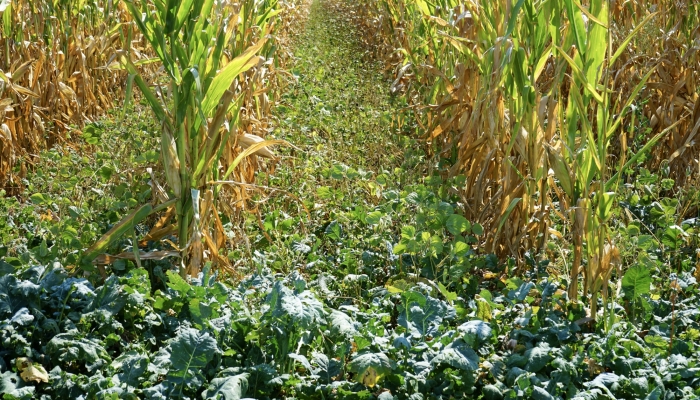Cover Crops: The Water Balance Question
 After several dry years that saw the average groundwater level decline in the Upper Big Blue Natural Resources District, some producers have wondered about the water balance equation for the growing season if they implement cover crops. If you irrigate the cover crops after planting to ensure best establishment, are you essentially “wasting” water on a non-essential crop? Does the cover crop consume moisture in the soil profile that would otherwise go to the cash crop? Ultimately, is it poor practice to plant cover crops during a period of drought?
After several dry years that saw the average groundwater level decline in the Upper Big Blue Natural Resources District, some producers have wondered about the water balance equation for the growing season if they implement cover crops. If you irrigate the cover crops after planting to ensure best establishment, are you essentially “wasting” water on a non-essential crop? Does the cover crop consume moisture in the soil profile that would otherwise go to the cash crop? Ultimately, is it poor practice to plant cover crops during a period of drought?
We asked Katja Koehler-Cole (kkoehlercole2@unl.edu), statewide soil health extension educator with Nebraska Extension, to weigh in on the matter:
I want to start by saying it is not always necessary to irrigate a cover crop to establish. In our long-term trials (8 years) in Clay Center in corn and soybean fields under a linear irrigation system, cover crops were planted well after irrigation had ended. While their biomass production was modest (around 1,000 lb/a or equivalent to 6-8” of growth), they improved soil aggregation, soil carbon and microbial biomass. The cover crops had no statistically significant effect on plant available water or infiltration, however, as the graph below shows, the numbers were definitely trending towards an increase (Blanco et al., 2023). For the first three years of these trials, we measured soil water storage several times throughout the years using neutron probes. Most times there was no difference between the plots with and without cover crops. In one measurement in June 2016, the cover crop plots had about an inch more soil water than the no-cover crop plots, probably because cover crop residue reduced evaporation (Baker et al., 2018).
Cereal rye cover crops use about 1” of water for each 1,000 lb/a of biomass they produce (Feria et al., 2016). Due to the timing of crop planting, most cover crops are terminated in April to early May, at which time they have about 1,000 to 2,000 lb/a of biomass and used 1 to 2” of soil water. Usually spring precipitation is sufficient to recharge soil water which is why we never saw a soil water deficit in our experiments. It is possible that cover crops prevent some water percolating to deeper layers which could be beneficial as it may also reduce residual soil nitrate leaching.
Nebraska on-farm studies (Nygren and Melvin, 2021, see “Effects of Cover Crops on Soil Water In Irrigated Soybean-Corn Systems”) on irrigated soybean fields comparing soil water content in cover crops and no-cover crop plots had similar findings. While soil water content was lower in the cover crop plots at the time of soybean planting, it was mostly still above field capacity. In wet years, soybean planting conditions were actually better following a cover crop. Rainfall in the weeks after planting was enough to refill the soil water profile and no soybean yield difference was detected following the cover crops in any of the sites.
Literature cited
Blanco-Canqui, H., Ruis, S. J., Koehler-Cole, K., Elmore, R. W., Francis, C. A., Shapiro, C. A., ... & Ferguson, R. B. (2023). Cover crops and soil health in rainfed and irrigated corn: What did we learn after 8 years?. Soil Science Society of America Journal, 87(5), 1174-1190.
Barker, J. B., Heeren, D. M., Koehler-Cole, K., Shapiro, C. A., Blanco-Canqui, H., Elmore, R. W., ... & Mohammed, A. T. (2018). Cover crops have negligible impact on soil water in Nebraska maize–soybean rotation. Agronomy Journal, 110(5), 1718-1730.
Martinez-Feria, R.A., Dietzel, R., Liebman, M., Helmers, M.J. and Archontoulis, S.V., 2016. Rye cover crop effects on maize: A system-level analysis. Field Crops Research, 196, pp.145-159.

